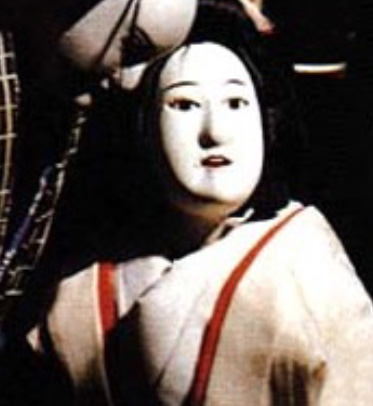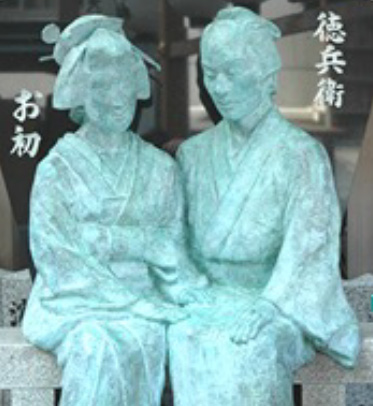The Past and Present of Ohatsutenjin-Dori Arcade
The origin of Ohatsutenjin-Dori Shopping Street is indeed closely associated with Tsuyunoten Shrine (also known as Ohatsutenjin). Shortly after the end of World War II, food and beverage establishments began to gather within the precincts of Tsuyunoten Shrine, and it flourished as the Ohatsutenjin Food Alley with around 30 shops. Some of the shops that existed at that time, such as "Shumai no Amihiko" specializing in steamed dumplings and "Ogiya" offering small traditional Japanese dishes, have relocated nearby and continue to operate while preserving the flavors of the past.
The main hall of Ohatsutenjin Shrine was lost during the war, but miraculously, several buildings on the western side of the arcade survived the fires. Mr. Takahashi, the former chairman of the arcade, reflects on the situation at that time, saying, "To escape the spreading fires, we all participated in a bucket brigade." It is a testament to the community's efforts to prevent the fire from spreading and protect the buildings during those challenging times.
After the devastation of war, the surviving arcade became home to a few notable shops that have maintained their reputation to this day. Among them are "Yukariya," famous for its original-style okonomiyaki, and "Hon Tonpei," known as the original creator of buta-hira-yaki (pork-filled crepes). Around the 1950s, low-rise buildings started to be constructed, giving the arcade a more defined shape as a shopping district. These establishments have contributed to the continued legacy and charm of the Ohatsutenjin arcade.
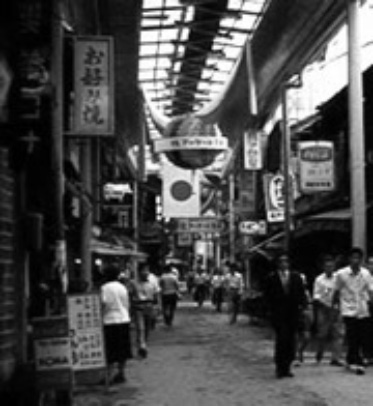
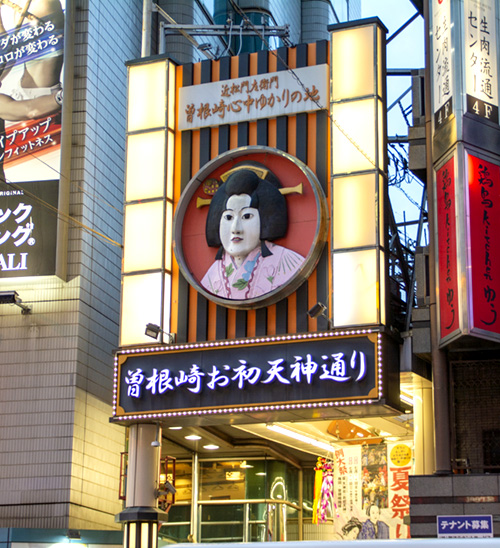
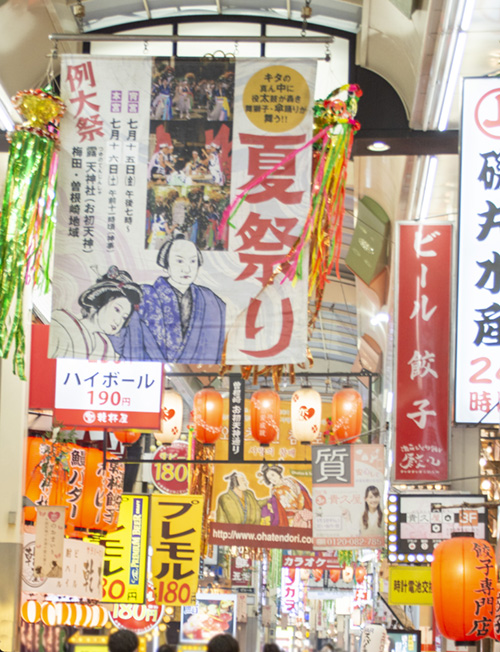
During the 1960s, movie theaters and other establishments began to emerge in the Umeda area. At the same time, the iconic comedy theater, Umeda Grand Kagetsu, opened its doors at the entrance of Ohatsutenjin-Dori arcade (originally opened in 1946 as a foreign film premiere theater). This attracted a bustling crowd of visitors, both those seeking laughter and those coming to pay their respects at the shrine.
This vibrant scene remains largely unchanged to this day. In the mid-1960s, the Osaka Expo, the construction of the Shin-Mido-Suji Boulevard running north to south, and the completion of the Osaka Station Building further drew a large number of people to the Umeda area.
Today, Ohatsutenjin-Dori arcade continues to thrive as a popular dining destination for not only shrine visitors but also business professionals and office workers in the Umeda area. It has firmly established itself as the most approachable shopping arcade in the northern Umeda area of Osaka, carrying with it a rich history.
By the way, the arcade was originally named "Suzuran-dori," but it later became "Sonezaki Center-gai" and eventually adopted its current name, "Sonezaki Ohatsutenjin-Dori arcade."
Indeed, the bond between Ohatsutenjin and the arcade is deeply intertwined and inseparable.
Ohatsutenjin is a place associated with Chikamatsu Monzaemon's play "Sonezaki Shinju" (The Love Suicides at Sonezaki).
The shrine widely known as "Ohatsu Tenjin," formally called Tsuyunoten Shrine, gained its popularity under the name "Ohatsu Tenjin." In the 16th year of the Genroku era (1703), the renowned playwright Chikamatsu Monzaemon wrote the puppet play "Sonezaki Shinju" (The Love Suicides at Sonezaki) based on an actual double suicide incident that occurred within the grounds of the shrine. Subsequently, the shrine became known as "Ohatsu Tenjin" in reference to the name of the play's heroine, Ohatsu.
"Sonezaki Shinju" is a play written by Chikamatsu Monzaemon based on the incident that took place on April 7th, 1703, where Ohatsu, a courtesan from Dōjima Shinchi Temma-ya, and Tokubei, a clerk from Uchimachi Hirano-ya, committed a love suicide in the "Tenjin no Mori" of this shrine. The play gained great popularity among the people of that time, and it is said that people of all ages and genders flocked to the shrine to offer their prayers.
This emotionally captivating work continued to be performed repeatedly and even today, many people visit, seeking both enlightenment and the fulfillment of love. In July 1972, a monument called "Sonezaki Shinju, Ohatsu, Tokubei Yukari no Chi" was erected in Sonezaki 1-chome by a group of volunteers to commemorate the two individuals who sacrificed their lives for love.
After the 300th memorial of the couple, one of the shrine's parishioners made a donation of one million yen, saying, "For Ohatsu-san." This inspired contributions from the local shopping district and others, and in April 2004, a bronze statue was created.
